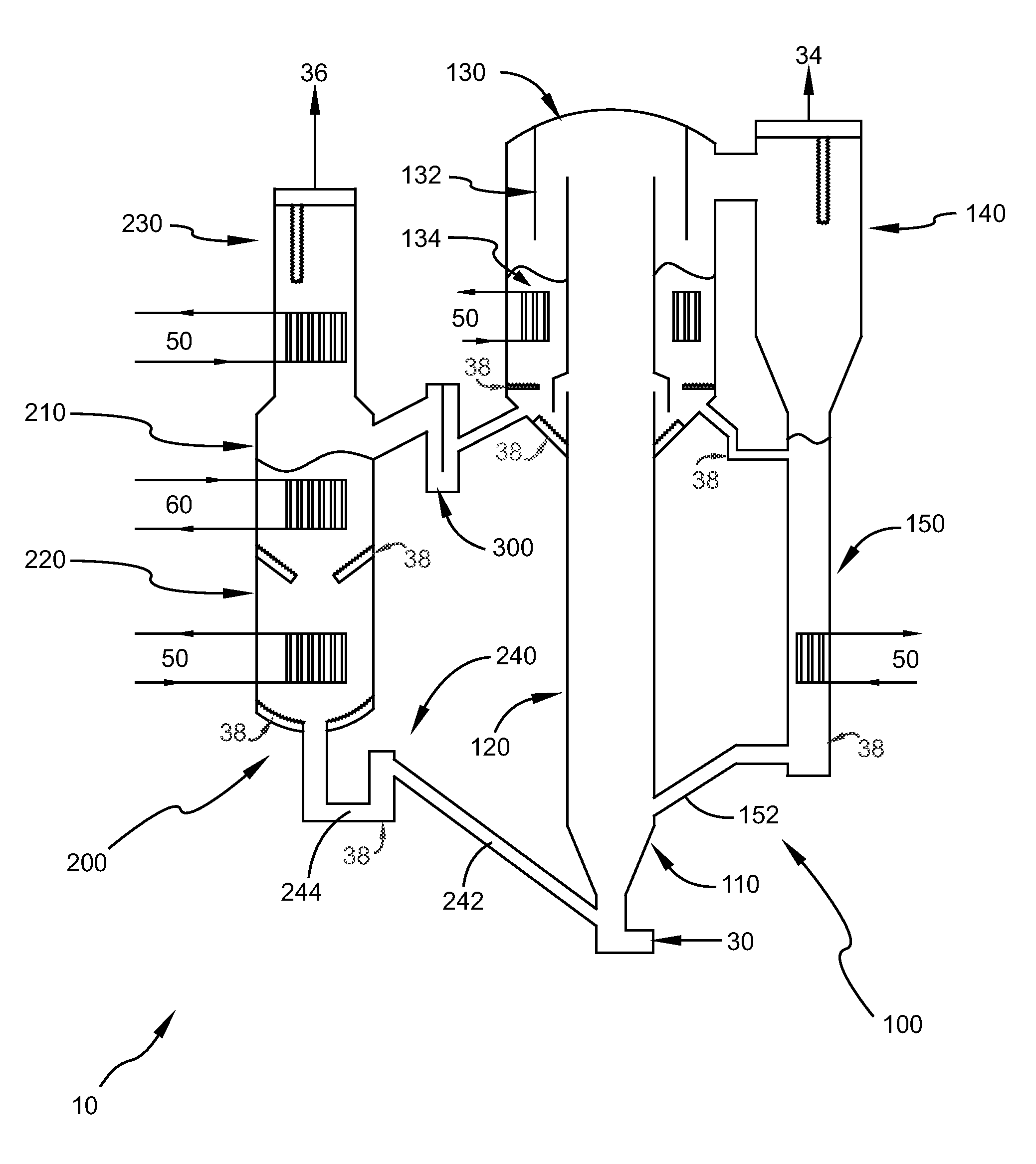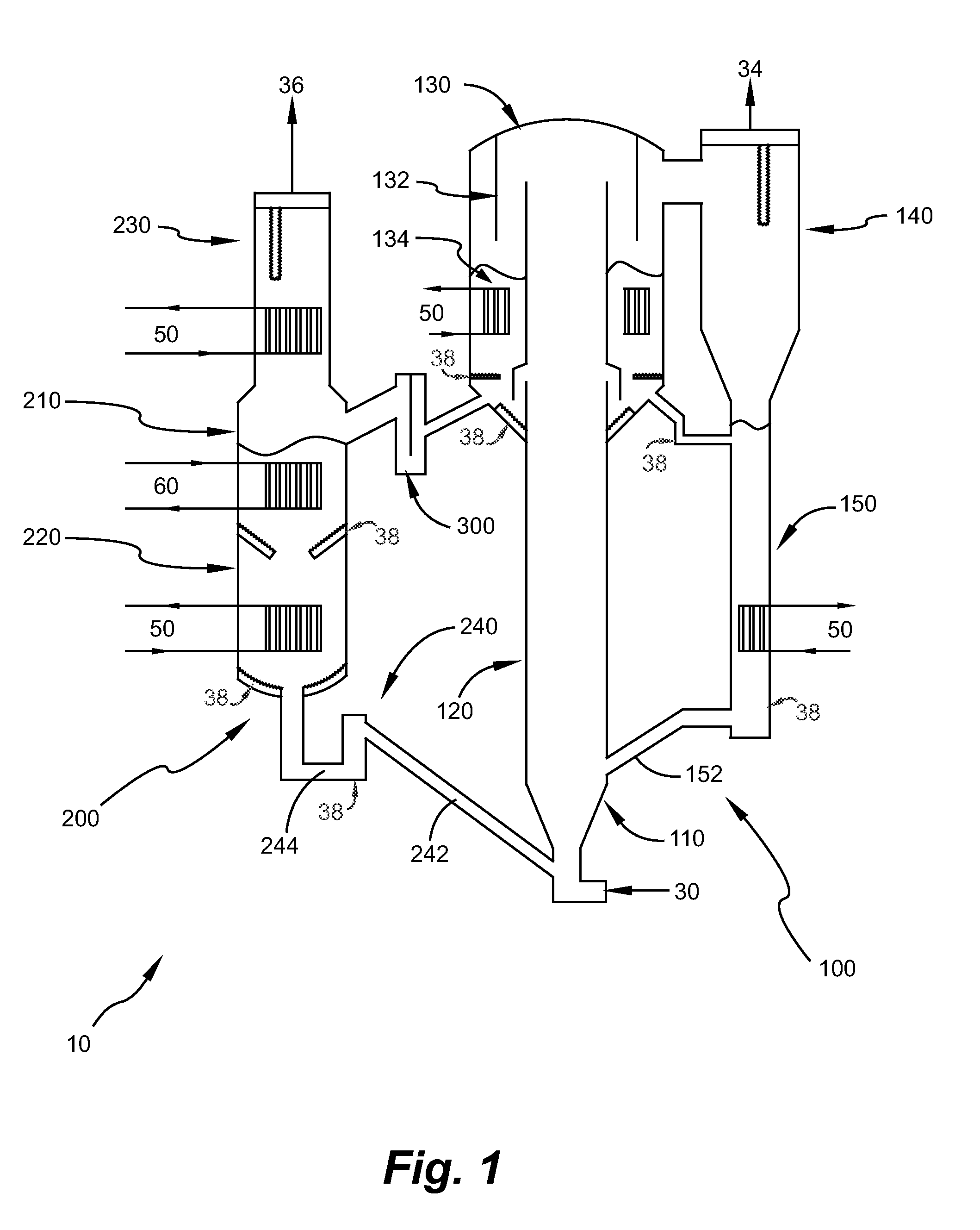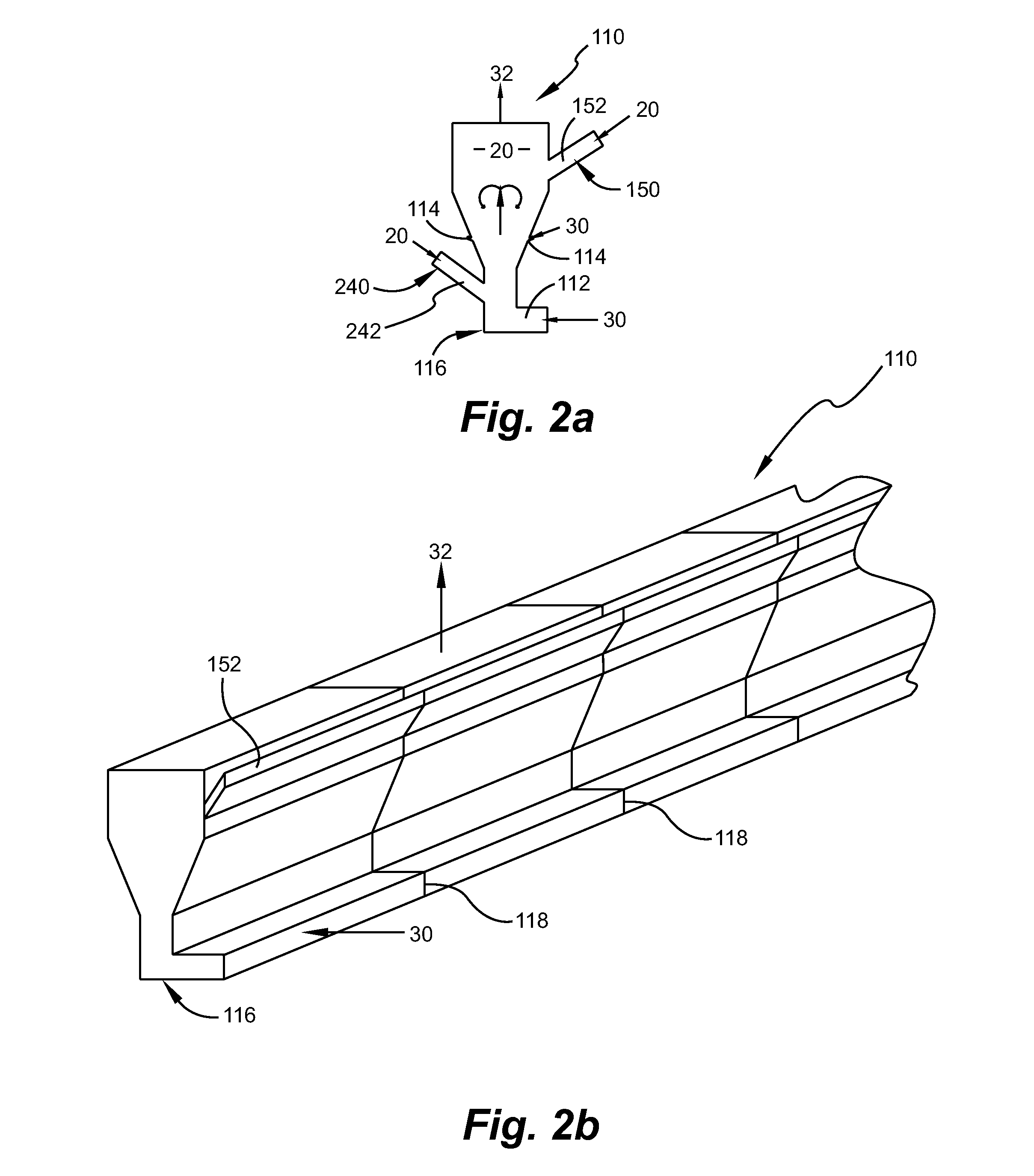Carbon dioxide absorber and regeneration assemblies useful for power plant flue gas
a technology of carbon dioxide absorber and power plant flue gas, which is applied in the direction of emission prevention, lighting and heating apparatus, separation processes, etc., can solve the problems of unfeasible technology, difficult to apply in practice, and inapplicability of bubbling fluidized bed to power plant systems, etc., to limit or prevent localized overheating of sorben
- Summary
- Abstract
- Description
- Claims
- Application Information
AI Technical Summary
Benefits of technology
Problems solved by technology
Method used
Image
Examples
example
[0114]As an example of enumerating the concepts of present invention, a test apparatus 400, as shown in FIG. 7, has been built, and sorbents for their CO2 capture ability has been tested on a continuous absorption and regeneration basis. This apparatus includes the major embodiments of the present invention, including the absorber assembly (as in FIG. 1), ICFB 130 (as in FIG. 1) and fluid bed regeneration of sorbent in annular space (as in FIG. 4).
[0115]In the test apparatus 400, as many different types of sorbent are being tested (both with low and high exothermic heat releases), the absorber riser section 120 was surrounded by a jacket cooler 122 to remove exothermic heat from absorption of CO2. For industrial scale systems, the heat removal will be achieved by injecting the cooled, partially spent sorbent to the bottom of the absorber assembly 100 (FIG. 1 for sorbents with slower kinetics), or at various elevations along the height of the absorber assembly 100 (FIG. 4 for sorbent...
PUM
 Login to View More
Login to View More Abstract
Description
Claims
Application Information
 Login to View More
Login to View More - R&D
- Intellectual Property
- Life Sciences
- Materials
- Tech Scout
- Unparalleled Data Quality
- Higher Quality Content
- 60% Fewer Hallucinations
Browse by: Latest US Patents, China's latest patents, Technical Efficacy Thesaurus, Application Domain, Technology Topic, Popular Technical Reports.
© 2025 PatSnap. All rights reserved.Legal|Privacy policy|Modern Slavery Act Transparency Statement|Sitemap|About US| Contact US: help@patsnap.com



